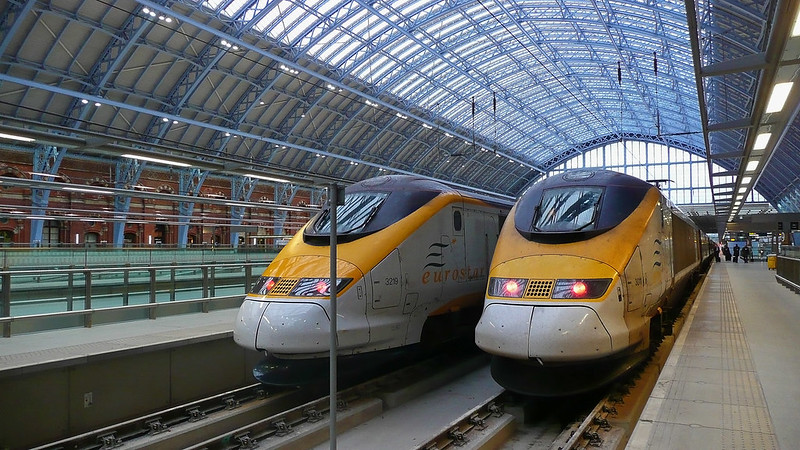If two trains headed under the English Channel on the same track, how do they keep the Queen and the French president from crashing?
Today is the 25th anniversary of the formal opening of the Channel Tunnel, a 31.4 mile long, mostly undersea rail tunnel connecting the city of Calais in northern France with the English town of Folkestone, Kent.
And by tunnel I actually mean three tunnels.
There are two used by trains, and there’s a service tunnel which is also for use in emergencies.
The idea of a direct connection through the Channel first got traction in the days of Napoleon, but, as is often the case with projects of this size, it took a while.
Digging started in the late 19th century and the actual construction didn’t get underway for about another century, concluding in 1994 after nearly a decade of work and many billions of dollars in investment.
Marking the project’s completion then fell to the heads of state for France and the United Kingdom, that was Queen Elizabeth the Second and Francois Mitterand.
But how to do it? The first person to fly over the Channel was a Frenchman in 1909, while the first known Channel swimmer was a Briton. A delicate balance.
So they decided to meet in the tunnel itself, each taking a train from their country to meet the other and then visiting both sides of the new system.
And “meet” was literal.
The idea was that the two trains would take the two leaders to each other.
Diplomatic, yes, but an engineer’s worst nightmare.
There are three tunnels down there for a reason.
One is for the trains heading north, the other for trains heading south.
You don’t want trains going toward each other on the same track.
In fact, the builders installed a computer system to prevent any subterranean train collisions.
The authorities had to temporarily turn off that early warning system and then carefully, so very carefully, ensure that the Queen and the President would not be thrown into each other.
And fortunately, it worked.
The trains met nose to nose in Calais, before Elizabeth and Mitterand cut ribbons, gave speeches and had lunch together.
Then they rode back to the UK, while the engineers turned that special safety computer back on.
By the way, the longest road tunnel in the world is the Laerdal Tunnel in Norway, which is so long (15 miles) that designers had to consider how to keep drivers from losing their concentration from being in a long, boring underground tunnel.
The solution: they made the tunnel less boring.
They used special lighting, curved physical features and other techniques to make drivers feel more engaged and comfortable, and not merely driving through a very long single tunnel, presumably with a light at the end of it.
The Channel Tunnel: 20 fascinating facts (Telegraph UK)
10 Strange Structural Engineering Marvels: Laerdal Tunnel (HowStuffWorks)
Back Cool Weird Awesome for $1 a month on Patreon!
Eurostar Train (photo by Slices of Light via Flickr/Creative Commons https://flic.kr/p/6gQjEM)

